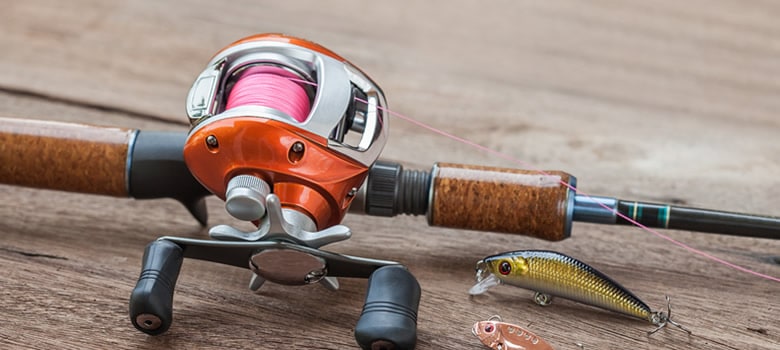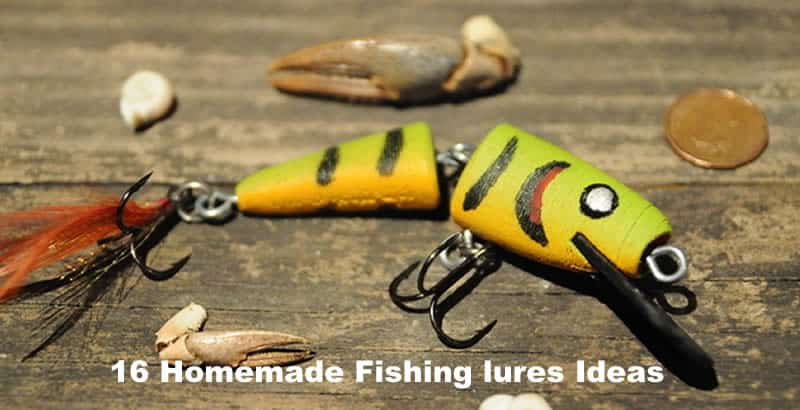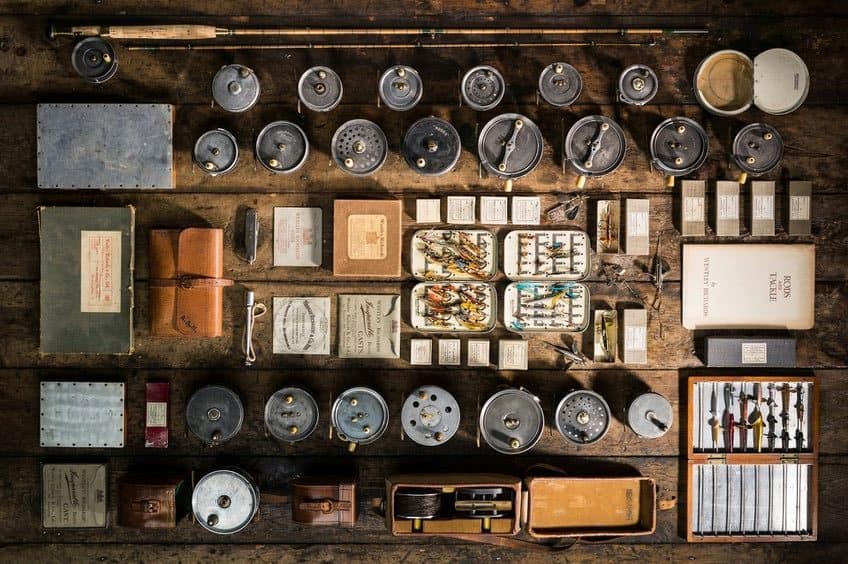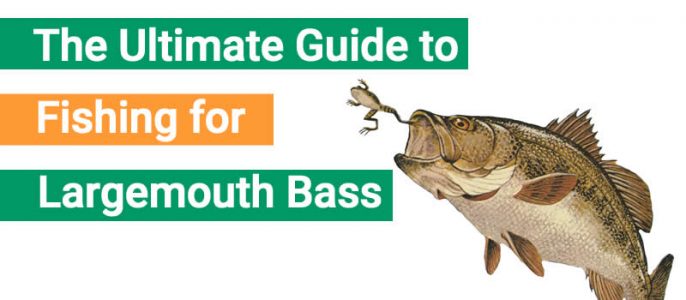If you buy via a link on this page, we may receive a commission, at no extra cost to you.Learn more
Whether you want to go fishing in deep waters or have a need for speed, everything depends on the gear ratio on your fishing reel.
The gear ratio on a fishing reel means the speed at which the fishing line reels. In simple words, the gear ratio is what determines the speed at which your fishing reel will pick up a line.
Consider this example: your fishing reel has a gear ratio of 6.3:1. This means that there will be approximately 6 rotations of the spool for every 360-degree spin of the fishing reel.

If you still don’t know how to interpret the gear ratio on your fishing reel, then there’s no need to worry. Keep reading to find out what exactly the gear ratio means, and everything else you need to know before you head out for fishing.
Understanding the Gear Ratio on a Fishing Reel
Your fishing reel is a complex mechanism. One of the most important parts of the fishing reel is the gears that act as a bridge between the handle and the spool. When you spin the handle, the gears rotate in a manner that results in the spinning of the spool.
Since the gears are situated in the middle, they determine how much the spool would move when you turn the handle. Therefore, the gear ratio tells you the speed or number of revolutions that the spool will have when you spin the handle.
Here’s a basic formula to remember as the number of revolutions decreases, the power of your fishing reel increases. Similarly, as the number of revolutions increases, the speed of your fishing reel increases.
To cater to fishermen of all types, fishing reels come in a variety of different gear ratios. Every gear ratio is catered to a specific purpose in fishing – especially when it comes to choosing between high or low gear ratios.
Inches-Per-Turn (IPT)
IPT, or inches-per-turn, is the diameter of your spool that directly impacts the amount of line you retrieve with one 360-degree turn of the handle.
When you have a large spool diameter such as in saltwater fishing reels, you also have a higher IPT. The IPT tells you how much of the line extends into the reel when you make a full turn with the handle.
Remember that your IPT needs to be as consistent as possible. If you have an inconsistent IPT, then even a high gear ratio will give you low-speed performance.
Why is the Gear Ratio Important?
The gear ratio is only as important as the fisherman wants it to be.
Some experienced fishermen rely on their years of experience in the sea instead of the gear ratios on different fishing reels. In contrast, beginner fishermen prefer to take as many precautionary measures as possible to ensure that they catch fish.
The truth is that having an unfavorable gear ratio will not stop you from catching fish at sea. However, having the right gear ratio can certainly help boost your productivity and effectiveness.
What Gear Ratio Should I Choose?
There is no single answer to this question.
If there was a ‘best gear ratio’ then the others wouldn’t even survive in the market. The gear ratio that you choose depends on your level of expertise. Here’s how to choose the best gear ratio:
For Beginners
If you are just a beginner, then it is recommended to get a lower gear ratio. Low gear ratios are easier to operate and require minimal effort from the fisherman. You can buy the 6:1 gear ratio as it is considered mid-range, which is suitable for beginners.
For Experienced Fishermen
If you are ready to enhance your skill and performance at sea, then you can opt for a high gear ratio. You can opt for the 7.4:1 gear ratio which is perfect for experienced fishermen.
The Best-Seller
One of the most sold gear ratios is the 6.4:1. This gear ratio falls in the medium range, which makes it a great choice for both novice and experienced fishermen.
What is a High Gear Ratio?
A high gear ratio is anything that is 7.1:1 and higher. The highest gear ratio that you can find on a fishing reel is up to 9.1:1.
While high gear ratios come at a high price, they are still becoming a popular choice amongst many fishermen. If you already have practice working with a rod, then you can use a high gear ratio to quickly take up the slack once a fish bites on the bait.
Remember that a high gear ratio also means that you can bring the bait back to your boat quickly. This means that even if you use artificial baits, you can be just as efficient in catching fish.
You should use a high gear ratio for:
- Fishing in small strike zones
- Catching fast-moving fish
- Making use of artificial lures
- Using jerky movements
With high gear ratios, you can use a range of lures including topwater lures and jigs. Both of these lures require your fishing reel to act quickly when you get a bite, which makes high gear ratios the perfect choice.
What is a Low Gear Ratio?
If low speed is your top priority, then you can choose a low gear ratio on your fishing reel. A low gear ratio falls between 4:1 and 5.4:1.
Fishing reels with a low gear ratio are highly recommended for beginners who are just getting started with fishing. Instead of having to operate complex and quick rotating mechanisms, a low gear ratio can help you become familiarized with the reel first. Beginner anglers can pair spinnerbaits with their low gear ratio to enjoy both control and power intensity.
When you need to be patient and keep your bait in the strike zone for as long as possible, a low gear ratio will be very beneficial. These low-gear fishing reels are also great for fishing in cold water, especially when your bait is slow.
You can use a low gear ratio for the following:
- Slow-moving fish
- Fishing in cold water
- Deepwater fishing
Remember that a low gear ratio will prevent any quick or jerky movements. For this reason, it is recommended to use heavier lures that have increased water resistance. When you use a low gear ratio for heavier lures, you are less likely to scare fish away due to sudden movements in deep waters.
The two most popular lures for low gear ratio are deep crankbaits and spinnerbaits. With both these lures, the fisherman can put more effort into finding the fish than retrieving the line.
Gear Ratio and Types of Fishing
Before buying a gear ratio, you should also consider the type of fishing that you prefer. Here is a quick guide on different gear ratios according to the fishing technique:
1. Bass Fishing
A professional bass fisher is likely to have a whole set of reels for this type of fishing. However, you can easily replicate the fishing experience with one lure on a medium gear ratio of 6:1.
When you attach a crankbait or jig to your fishing reel, this medium gear ratio should be able to control it with precision. A medium gear ratio can be easily used with fish lures because you can adjust the speed. On the slower end, you can fish for swimbaits and other deep-diving sea creatures. To catch faster fish lured with jigs, you can increase your manual reeling speed.
2. Saltwater Fishing
For saltwater fishing, the best gear ratio is 4.9:1. Saltwater fishing typically involves bait rigs to keep the bait on the hook as you retrieve the fish. With a low gear ratio like 4.9:1, fishermen can easily catch fish like the flounder or red drum.
3. Worm Fishing
If you want to catch bait in the nooks and corners of the sea, then you might opt for worm fishing. Worm fishing means fishing using plastic worms to attract bait.
For worm fishing, it is recommended to have a high gear ratio of 6:1 or faster. This helps you reel the fish quickly before it gets snagged in the cover again.
4. All-Around Fishing
Some fishermen are not too concerned about the differences between saltwater and freshwater applications. In this case, you use a gear ratio that is suitable for all types of fishing.
Try using a slow to medium gear ratio between 4.9:1 and 6:1 for any type of fishing. With a slow to medium gear ratio, you can freely use any lures and baits. This makes it easier for fishermen to catch a wide variety of fish.
Once you experiment with different gear ratios, you will find one that is the best fit for you and accommodates a range of fishing techniques.
Related Questions
1. What Gear Ratio is Best for Spinnerbaits?
If you use spinnerbaits as a way to lure fish towards your reel, then you need a moderate gear ratio. A gear ratio of 6.3:1 is best for spinnerbaits. At this speed, you can operate the spinner bait with precision and burn in the baits when you need to.
2. What is the Difference in Gear Ratio on a Fishing Reel?
Gear ratios are divided into three main categories: slow, medium, and fast. While slower gear ratios will give you access to lures and baits, a fast gear ratio will give you high speed. ‘Slow’ gear ratios are below 6:1, and faster gear ratios are 7:1 and above.
3. What is the Best Gear Ratio for Frog Fishing?
Use a 6:1 gear ratio for frog fishing to achieve the best results. With this medium-range gear ratio, you can operate the lure with precision and also bring back the bait with high power.




